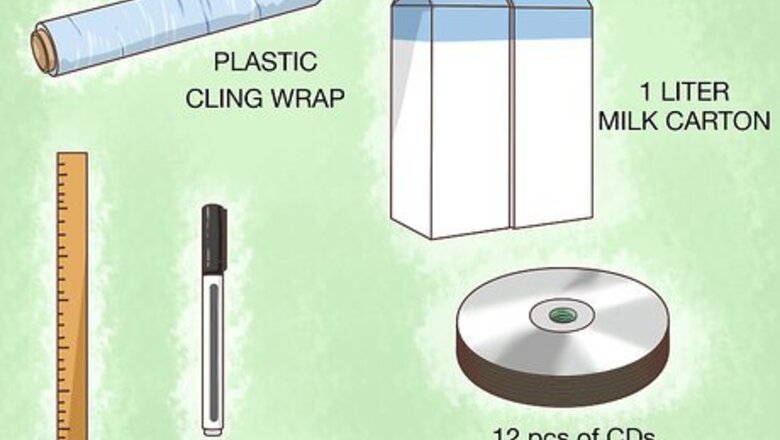
views
Testing Your Mattress Using CDs
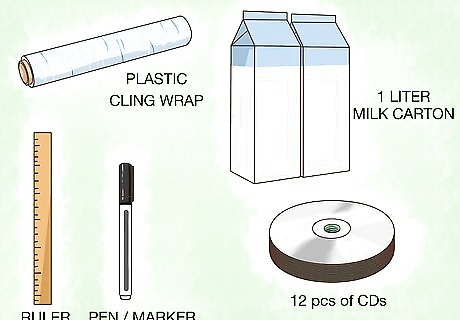
Gather your supplies. A few simple household supplies can be used to test the safety of an infant's mattress. If you don't have all the supplies, you can get most of them at a department store. You will need the following: A ruler A pen or marker Plastic cling wrap or a thin plastic bag Two full, one-liter (or one-quart) cartons of milk or juice, in square bottom cartons A stack of 12 CDs or DVDs
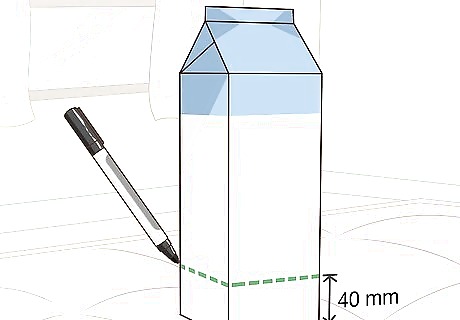
Draw a ring around one of the cartons. Take your pen or marker, and your ruler. Place your ruler at the bottom edge of the carton. Measure up an inch and a half (40 mm). Make a mark here and then draw a line running parallel to the bottom edge. Draw similar lines on the other three sides of the carton. You should now have one carton with a ring drawn all the way around it. It is not necessary to repeat this with the other carton.
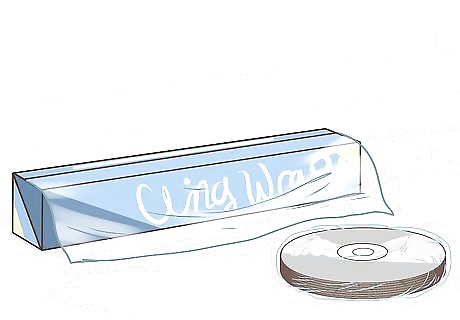
Wrap the CDs in plastic cling wrap (or in a thin plastic bag) and set them on the mattress. Wrapping will make sure the CDs stay in a pile. It will also prevent damage to the CDs. Stack all 12 CDs up in a neat pile. Wrap them securely. Make sure to take the CDs out of their cases. When you are done, set the CDs on the mattress. Pick the softest part of the mattress. This is important. Your baby could roll anywhere on the mattress during the night, so it's important to test the softest part and, especially, where the baby's head will be placed.
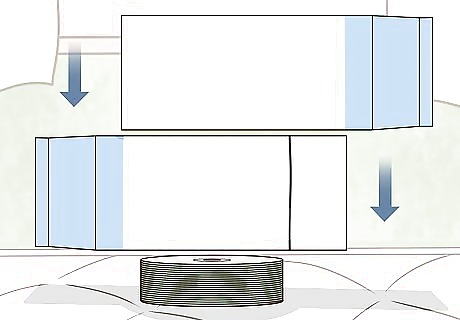
Lay the cartons on top of the CD stack. Start with the carton with the ring on it. Line up the edge of the CD stack with the ring you drew earlier. The cartons should be lying on their sides. Put the second carton on top of the first one, also on its side. Place it however you need to in order for the cartons and CDs to balance horizontally.
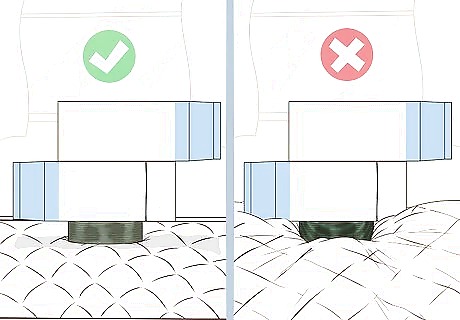
Determine your mattress's safety. A mattress should be firm enough that an infant is not at risk of suffocating if he or she sinks into the mattress. Look at the overhanging portion of the lower carton. This is the portion below the ring you drew earlier. This should not be touching the mattress. If the overhanging portion of the carton does not touch the mattress, it is safe for use. If the overhanging portion is touching the mattress, the mattress is too soft. You should replace it. You want to make sure the mattress you use is safe for your baby.
Testing your Mattress Using a Book
Gather your supplies. For this method you will need the following: A paperback book that is printed in B-format and that is at least 12 mm (one-half inch) thick. B-format simply means that the height of the book is about 200 mm (8 inches) and the width of the book is about 128 mm (5 inches). A ruler Two full, one-liter (or one-quart) cartons of milk or juice (or a single, two-liter carton), where the carton can be of any shape.
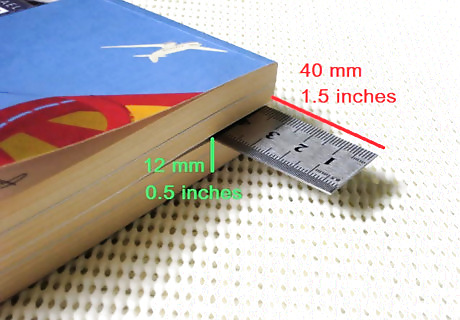
Find the page in the book that is about 12 mm (one-half inch) from the end. Insert your ruler tightly against the crease, with 40 mm (an inch and a half) of the ruler protruding from the top of the pages. Then close the book and place it over the softest spot on the mattress.
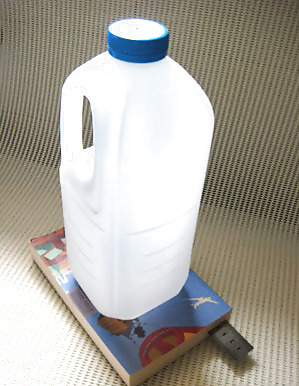
Place the two liters (or quarts) of milk or juice on the book, positioning the containers in such a way that the book remains horizontal. It is important that the book remains in an approximately horizontal position.
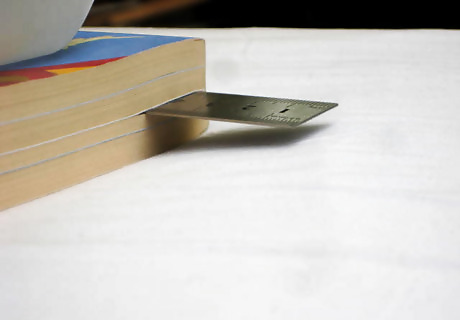
Determine your mattress's safety. If the protruding ruler does not contact the mattress, then the mattress is firm enough. However, if the ruler does contact the mattress, then the mattress is too soft. Do not use a mattress that is too soft. Replace it in order to keep your baby safe. If it looks like the upper picture, then it is firm enough. If it looks like this lower picture, then it is too soft.Wikihow Part 2, section 4b.png
Preparing a Safe Crib

Check to see if a mattress has been tested. While testing is not required everywhere, some mattresses are tested prior to being sold. Check the packaging of any mattress you purchase. See if it says anywhere on the packaging that the firmness has been tested for safety. Keep in mind, you should still test any mattress you purchase yourself. While mattresses may be tested in the factory, there's still a chance a soft mattress slipped through the cracks.
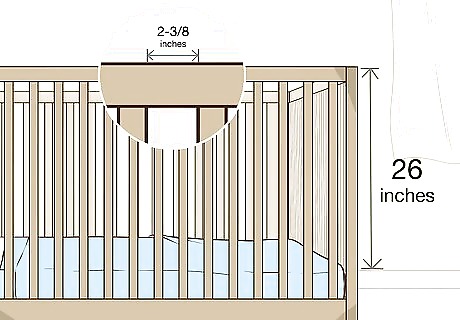
Make sure the bars and rails of your crib are safe. The mattress in the crib is not the only thing vital to your baby's health. You should also make sure the rails and bars are safe enough to keep your baby from rolling or crawling out of the crib. The bars on a crib should be no more than 2 and 3/8 inches apart. You do not want a baby to stick his or her head through the bars. The top of a crib's rails should be at least 26 inches from the top of the mattress. You may have to lower the mattress periodically as your child gets taller.
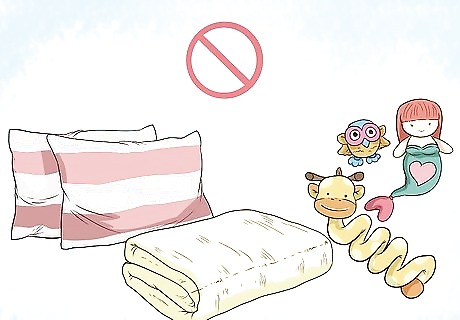
Do not place pillows, comforters, and toys in a baby's crib. Your child could smother on these objects in his or her sleep. Your baby may also use toys to get a leg up over the crib as he or she gets older. Do not use crib bumpers or bumper pads either. If you want to keep your baby warm, it's better to layer him or her in clothing. This is safer than covering your baby with a blanket. However, babies do not always need extra bundling. A room temperature between 70 and 72 degrees is usually enough to keep a baby warm at night.
Taking Other Safety Precautions
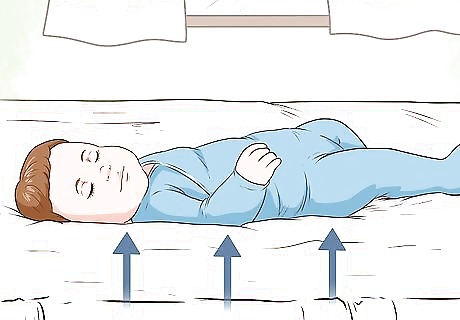
Lie your baby down on his or her back. Many people believe it is dangerous to lie a baby on his or her back because the baby may choke on saliva. Babies can easily clear themselves of fluids, even when placed on their backs. It is actually safer to lie a baby on his or her back. Babies can breathe easiest when lying on their backs. There are no obstructions keeping them from breathing. If babies spit up in their sleep, they can easily swallow the spit when lying on their backs. Check with your doctor to see if your child has health concerns that might change their safest sleeping position.
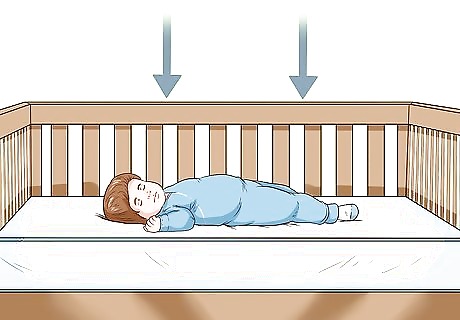
Place your baby in a crib alone. You should not co-sleep with an infant. You should also not have two infants share the same crib. Babies should always sleep alone. You should also avoid napping with a baby on the couch or in a bed.
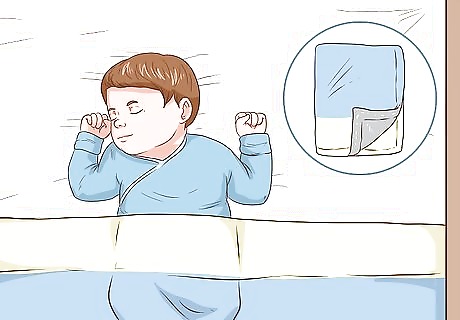
Use blankets carefully. The less you place in the crib, the better. If you do use a blanket, only use a thin blanket. Do not pull the blanket further than height of the baby's chest. Keep your baby's arms outside of the blanket. Tuck the blanket in to the sides and bottom of the crib. This will keep it secure, preventing your baby from pulling it over his or her head at night.

Make sure relatives and babysitters know safety precautions. Everyone who cares for the baby should know safe sleep conditions. Relatives and baby sitters should be well-informed on how to put your baby to sleep. This is especially important if you leave your baby overnight. It may be a good idea to have instructions taped or pinned up near the baby's crib.




















Comments
0 comment